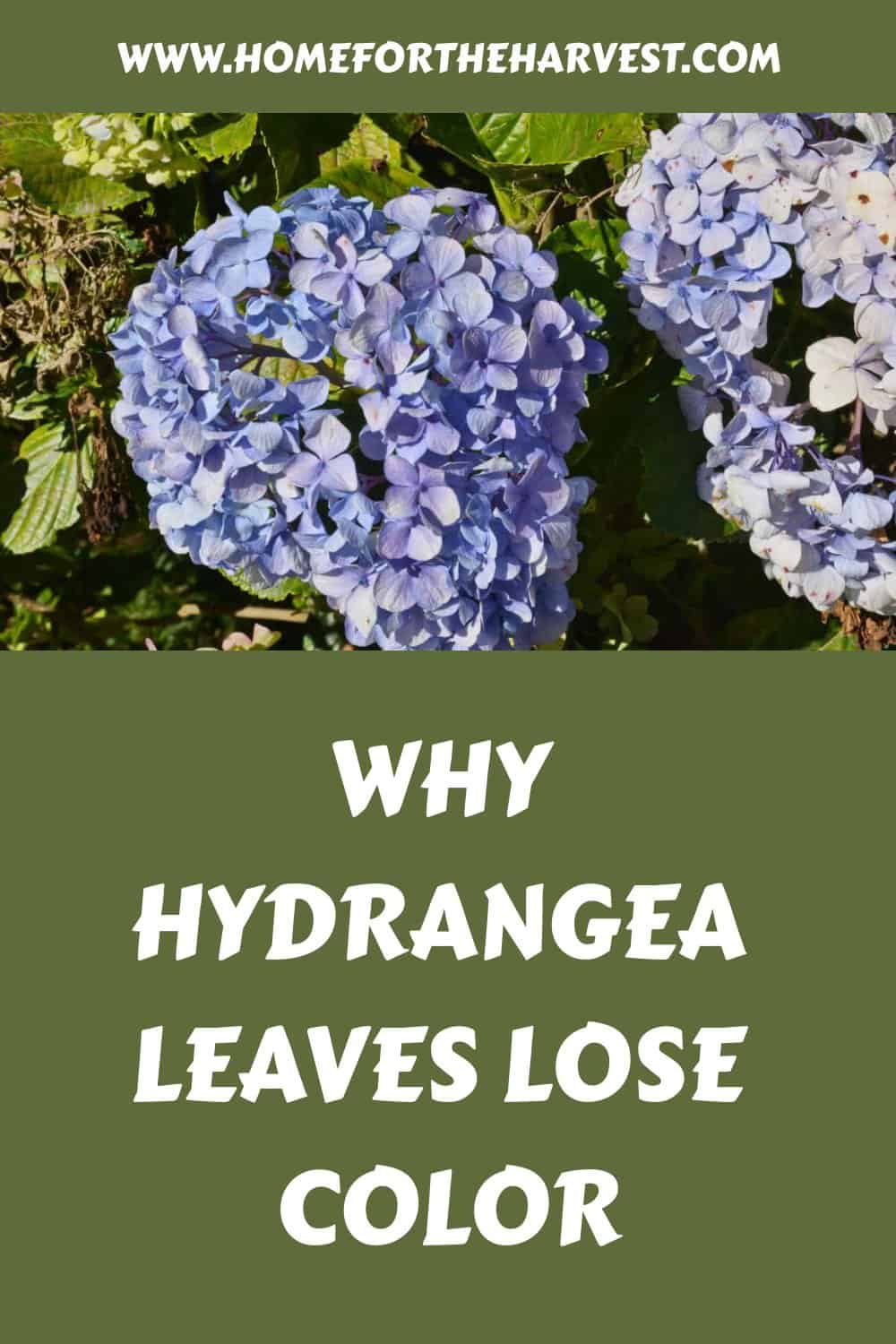When you see your hydrangea fading or losing its color, it may mean that the plant is stressed or lacking certain nutrients. Some of the most common reasons for hydrangea losing color include lack of water, too much sunlight, or nutrient deficiencies. Whether the leaves of your plant are most affected or the flowers aren’t as brilliant as you’d hoped, there are a few key things to check.
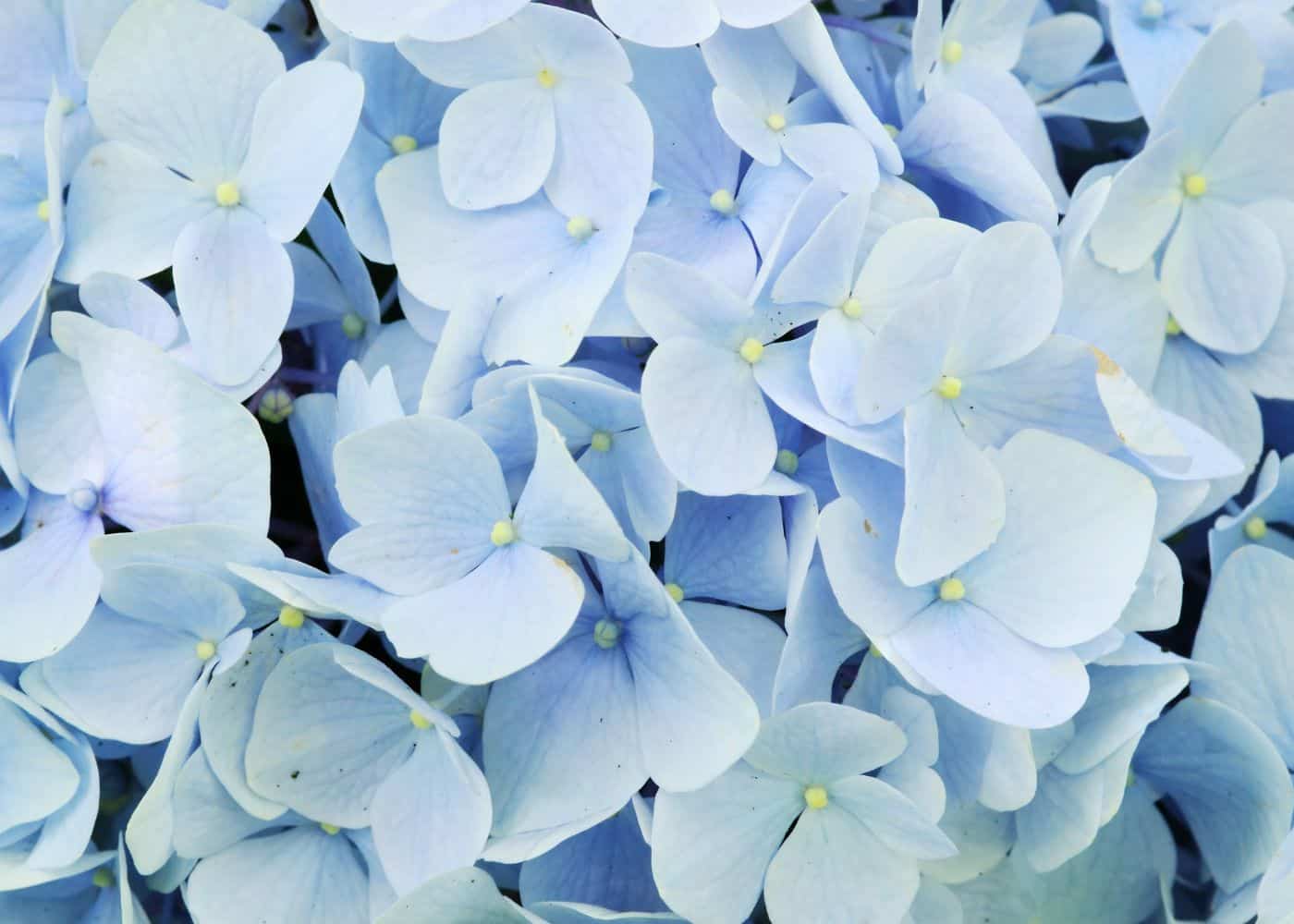
1. Intense sunlight
Intense sunlight can cause hydrangeas to lose their color. These shrubs don’t love harsh sunlight and may fade if exposed to it (especially if they are not used to it). Both the leaves and the flowers are susceptible to fading quickly in direct sunlight. But there are things you can do to prevent this from happening.
One of the best things you can do for your hydrangea is to get it in the shade during mid-day and the afternoon. Most hydrangeas like a little bit of shade during the hot summer months.
You may have to water your hydrangea in the morning and afternoon to keep it healthy if it’s in the blazing sun. Some types of hydrangeas have more stamina in direct sunlight than others. If your hydrangea is struggling, consider transplanting it to a better location.
You can also help your hydrangea by keeping the soil cool and moist. This can be done by placing a few inches of mulch on the soil. Organic mulches like composted yard trimmings are a great way to recycle materials and put them to good use in the landscape.
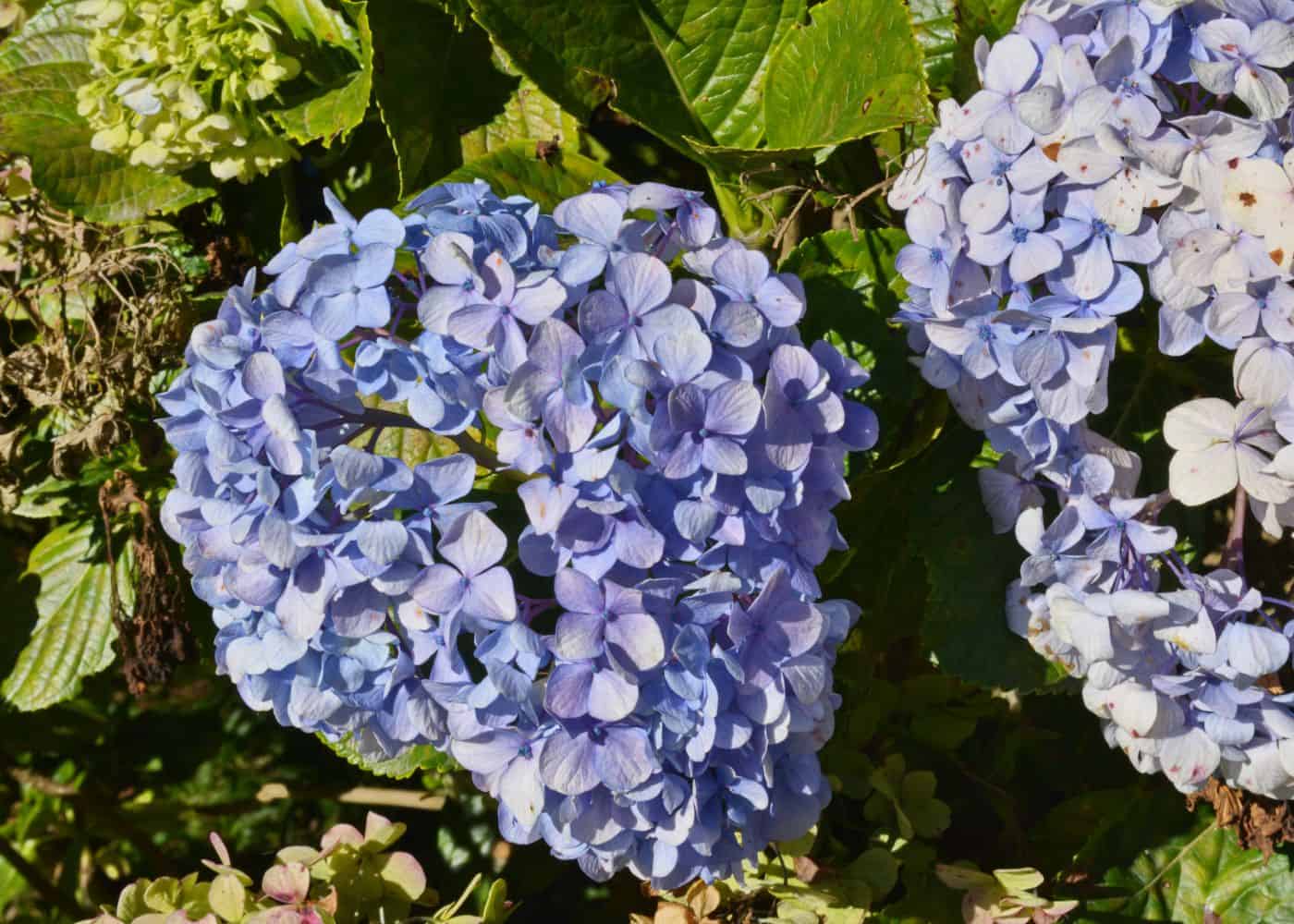
2. Lack of water
If you are experiencing the leaves on your hydrangeas turning brown, particularly around the edges, you may have a problem with a lack of water. Water stress on the leaves usually looks like brown crusty edges around the perimeter of the leaves.
During hot weather, hydrangeas need to be watered more frequently. They should be watered twice a week or more, preferably in the morning or evening. You can also use a soaker hose to reach the roots more deeply.
During hot, sunny days, hydrangeas lose water through the pores in the leaves. The resulting dryness can stress the whole plant. This can lead to leaves falling or wilting.
However, you should be careful about over-watering. Too much water can cause the hydrangea’s roots to rot, weakening the whole plant.
A good way to avoid these problems is to choose the right type of plants for your area. Water-tolerant hydrangeas are less prone to damage.
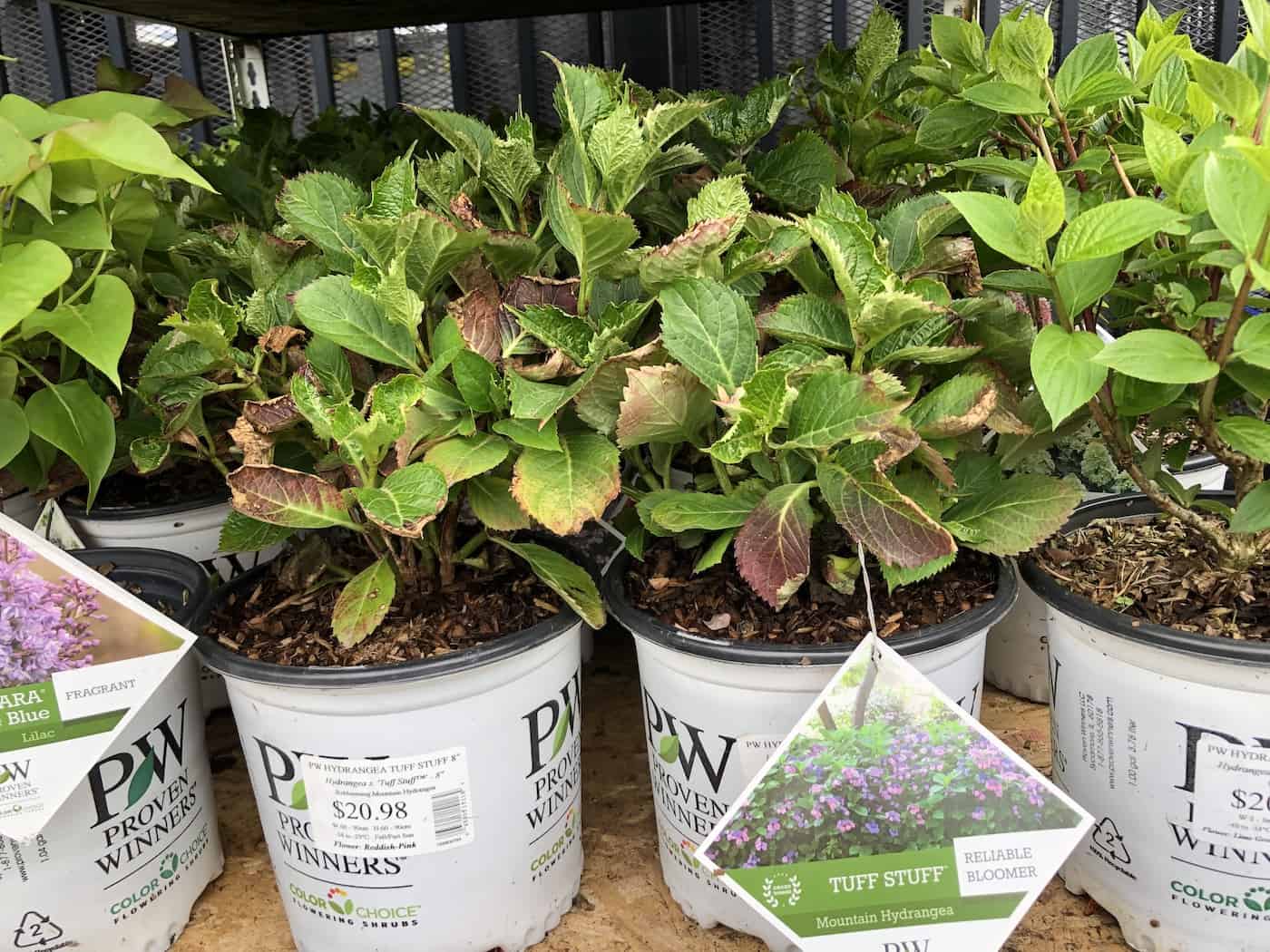
3. Overfertilizing with nitrogen
If the leaves are quite a bright green color, but the flowers are few, faded, and far between, you may have too much nitrogen. High-nitrogen fertilizers cause an abundance of green growth at the expense of flowers.
Here is a guide to hydrangea fertilizer to help you provide your plant with balanced nutrition that will encourage flowering.
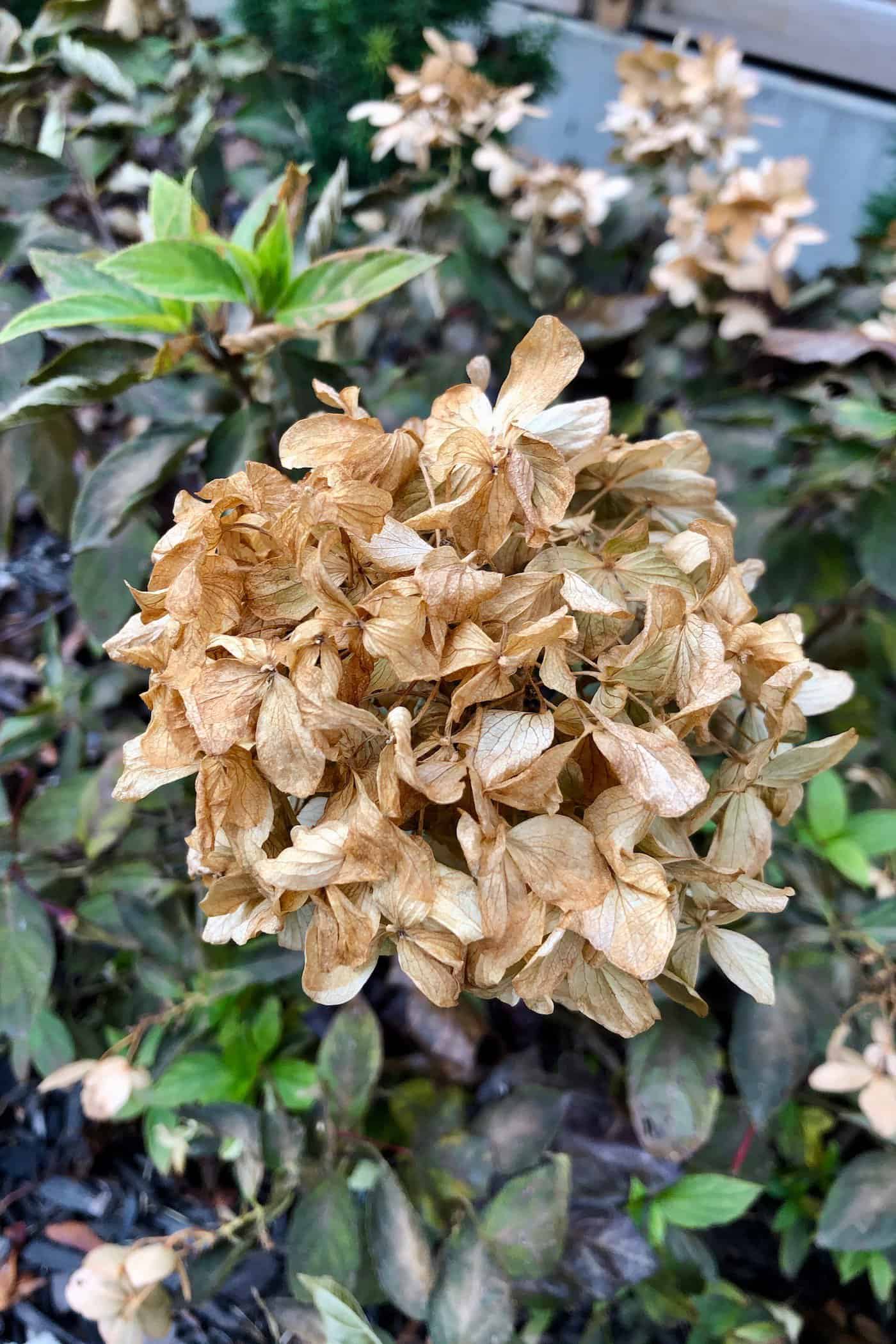
4. Lack of essential nutrients
Lack of color can indicate a nutrient deficiency in the plant tissue. Hydrangeas and other plants need 16 essential nutrients for healthy growth. The plants also require these nutrients to be in proper concentrations overall and with respect to each other, and the nutrients must be in a form where they are available to the plant’s roots.
Of the essential nutrients, a few are more commonly a problem with hydrangeas. Pale green to yellow leaves may indicate a nitrogen deficiency, among other things. Leaves with green veins but yellow-white showing between the veins may indicate a lack of iron.
A soil test is a good way to get insight into what type of environment your plant is growing in. Plant tissue testing is also available for severe cases.
5. Soil pH causing nutrient deficiency
Soil pH can change the color of the hydrangea’s flowers and can also affect the availability of essential nutrients. If soil pH is too high or too low, a hydrangea may not be able to absorb certain nutrients, even if they are present in the soil. This can lead to nutrient deficiency and faded leaves and/or flowers.
Hydrangeas tend to grow well in an acidic pH soil in the range of about 5.5-6.5 or so. Most nutrients are quite available at this acidity level. But in very acidic soil, where the flowers of hydrangea macrophylla are usually very blue, certain nutrients like nitrogen can be difficult for the plant to absorb.
High levels of some nutrients can also sometimes cause faded flowers. For instance, in acidic soils, blue flowers can be faded rather than vibrant if phosphorus levels are too high. This is because phosphorus can react with aluminum at a low pH, making it unavailable to the plant. So, adding more fertilizer is not the right way to combat a nutrient imbalance.
6. Fungal disease
Another problem can be a fungus. Fungal disease appears as faded white, yellow, black, or brown spots on the leaves and sometimes on the flowers. Some diseases cover whole areas while others commonly appear as spots or patches.
A white powdery coating on the leaves may indicate powdery mildew. This fungal disease is common in the summertime when temperatures are warm. Fuzzy grey patches can indicate several diseases, including downy mildew and botrytis.
7. Pest infestation
Certain pests can feed on the foliage and flowers of the plant, causing discoloration. This generally takes the form of pale spots caused by sap-sucking insects.
Rather than chewing on the leaves, these bugs suck the sugar-rich solution out from the plant’s leaves. The plant is not only injured by the piercing wound but also by being deprived of the nutrients and energy that is lost to the insects as they feed.
Leaves that are curled under may indicate aphids – a common sucking insect. Flip the leaves over and look for tiny soft-bodied insects. You may also see a sticky “honeydew” coating on the plant’s foliage.



